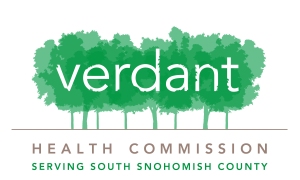Welcome to week 12 of the BetterU Challenge! (New here or want to find out more about this program? Jump back to the week 1 information here!)
Special thanks to Marni Hughes and Q13 Fox News – they are helping spread the word about the Go Red BetterU program! We are looking to help YOU participate right along with us. Are you going to join in on the BetterU program with us? If so we are honored to have you here! Leave messages below to say Hi, ask questions and shout it out that you’re doing the #GoRedBetterU program on Twitter, Facebook, Instagram, Vine and more!
Here is the link to the segment on Q13 news with from June 10, 2014. Chef Kirsten and Marni talk about making healthy choices at potlucks and Chef Kirsten shares her delicious and easy potluck favorite, Chicken Enchilada Bake! Catch up with Shirley and Kristi this week as well! Here (to be updated after airing June 14) are some clips from their video diaries. Here is the recipe for Chef Kirsten’s Chicken Enchilada Bake!
Week 12
Congratulations on completing this 12-week jump start into a healthier lifestyle!
Whether you have already made drastic changes to your lifestyle, or perhaps you’re taking it slowly and incorporating one new thing every week or two, either way you have improved your health and believe me, this all adds up!
Let’s go over the tools and knowledge you have acquired over the past 12 weeks:
- Identifying your personal benefits and barriers to healthy eating and physical activity. Creating a plan of action with SMART goals.
- Making small, simple changes to your lifestyle to be more active and eat healthier foods. Adding, removing or replacing ingredients to make your favorite recipes healthier.
- Getting in the valuable habit of tracking physical activity and foods in this journal or your own personal journal or mobile phone/online tracker. Fitting physical activity in at home, work and when traveling. Making healthy choices when eating away from home.
- Building a support team. Learning the importance of and incorporating strength/resistance exercises if you weren’t already.
- Knowing your BMI (body mass index). Making over your weight (knowing your calorie needs, setting a weight-loss goal if necessary.)
- Knowing physical activity recommendations. Distinguishing low, moderate and vigorous activities. Shopping heart-smart at the grocery store.
- Knowing appropriate levels of blood cholesterol and triglycerides. Identifying behaviors you can change to control your cholesterol.
- Knowing appropriate levels of blood pressure. Managing your stress.
- Learning about diabetes. Using exercise to reduce your risk for diabetes.
- Checking your family history for heart disease and risk factors. Encouraging your family to make heart-healthy choices.
- Knowing the risks associated with smoking and secondhand smoke. Advocating for a smoke-free community.
- Advocating for women’s heart health. Finding new opportunities for physical activity and healthy eating. Celebrating how far you have come!
This is not the end. This is the beginning, or the continuation of your heart-healthy new lifestyle. Keep on learning and improving. Keep setting SMART goals and continue to keep your eye on the ultimate prize: a long, healthy and vibrant life.
Life happens. You will have slip-ups. This doesn’t mean you give up! This means you go back to your program book and create your new plan of action. Do you need to get back on track with journaling? Do you need to make time for healthy menu planning and shopping? Do you need to learn some new inspiring recipes? Do you need to create a plan of action for your fitness if you’re not treating your heart to 150 minutes every week? Get back on track right away. Don’t beat yourself up. We will make mistakes or eat a few too many cookies, or skip working out some weeks. This is an opportunity to make new goals and get back on track!
Stop – if you’re tempted to make a choice that doesn’t support your commitment to honoring your life, your body, your active lifestyle and healthy eating.
Think – about the benefits you are enjoying from new, healthy habits. Remind yourself why your eating and physical activity choices are important.
Choose – the best solution. Whether you’re having a high-fat snack attack or you want to skip exercising after a long day – you’ll feel better if you choose the healthier option.
We celebrated this final weekly get together by sharing a meal together. Participants brought some healthy and delicious potluck style meals and I have to say…it was DELICIOUS! King5 HealthLInk was there to capture the tears, celebrations and testimonies to the participants successes and lifestyle changes. I can’t wait for it to air, we’ll update this as soon as we get the footage!
Where to go from here:
Keep up the lifestyle and pat yourself on the back every day for being a heart-healthy individual. Now you can help others do the same and even help save lives!
1. Advocacy is the process of supporting a cause. If women’s heart health is important to you, raise awareness and get involved in the Go Red For Women cause. Donate time. Send a letter to your congressperson to encourage him/her to cosponsor the HEART for Women Act to raise awareness among women and their healthcare providers.
2. Tell five women in your workplace, your family and your community about Go Red for Women.
3. Raise money. Get involved in the American Heart Association’s fundraising activities for education and research related to heart disease and stroke. Visit GoRedForWomen.org for information and ideas on ways to get started. Walk with us in the Heart Walk!http://www.heartwalk.org/site/c.rjJ0J6MHIoE/b.5777283/k.2284/Heart_Walk__National_Web_Site.htm To join the Go Red for Women team, search “Join a team”, then “American Heart Association” then “Go Red for Women”
4. Wear red on National Wear Red Day in February and raise funds for American Heart Association efforts to help women by offering educational programs, advancing their understanding about their risk factors for heart disease, and providing tools and motivation to reduce their risk and protect their health.
5. Shop. Encourage your friends to visit the American Heart Association’s Go Red Shop (ShopGoRed.com). It’s a great way to raise money and awareness for this important issue.
6. Share your stories from the heart. Share with friends and family and visit GoRedForWomen.org to tell people about your accomplishments. Connect with others who choose to be heart healthy. Learn from other women’s experiences and provide support. Sharing your story is a great way to help yourself and others.
Make it YOUR mission to fight heart disease in women by continuously improving your health!
Notes from the meetings:
The ladies and I celebrated with a healthy potluck for our final session. Everyone brought some delicious dishes from salads, appetizers to desserts – yes, healthy desserts! It was a bittersweet end to the 12 weeks we’ve been spending together. We all wished it would continue! The ladies learned their results and we’ll be posting them next week after we reveal them on Q13Fox! Make sure you watch Tuesday, June 17 during the evening news to find out!
Have a wonderful week and congratulations on Week 12 towards a BetterU!

Special thanks to our sponsors:




